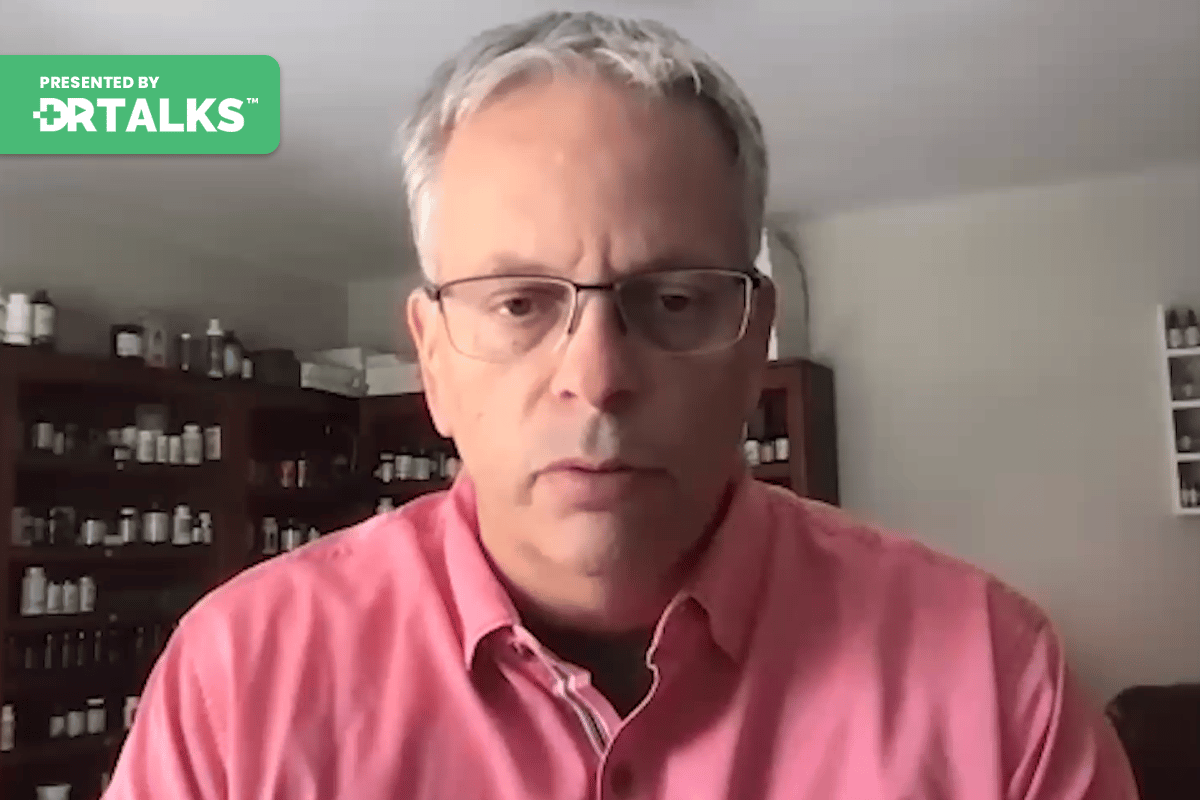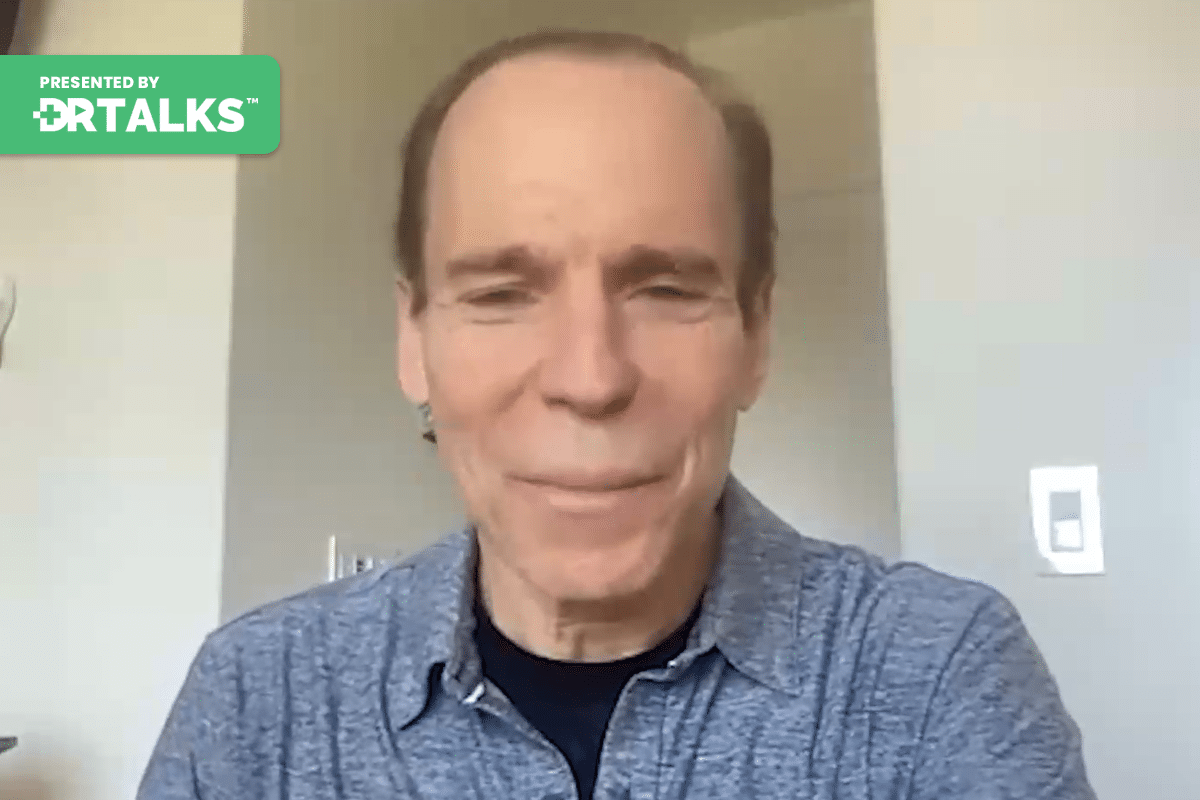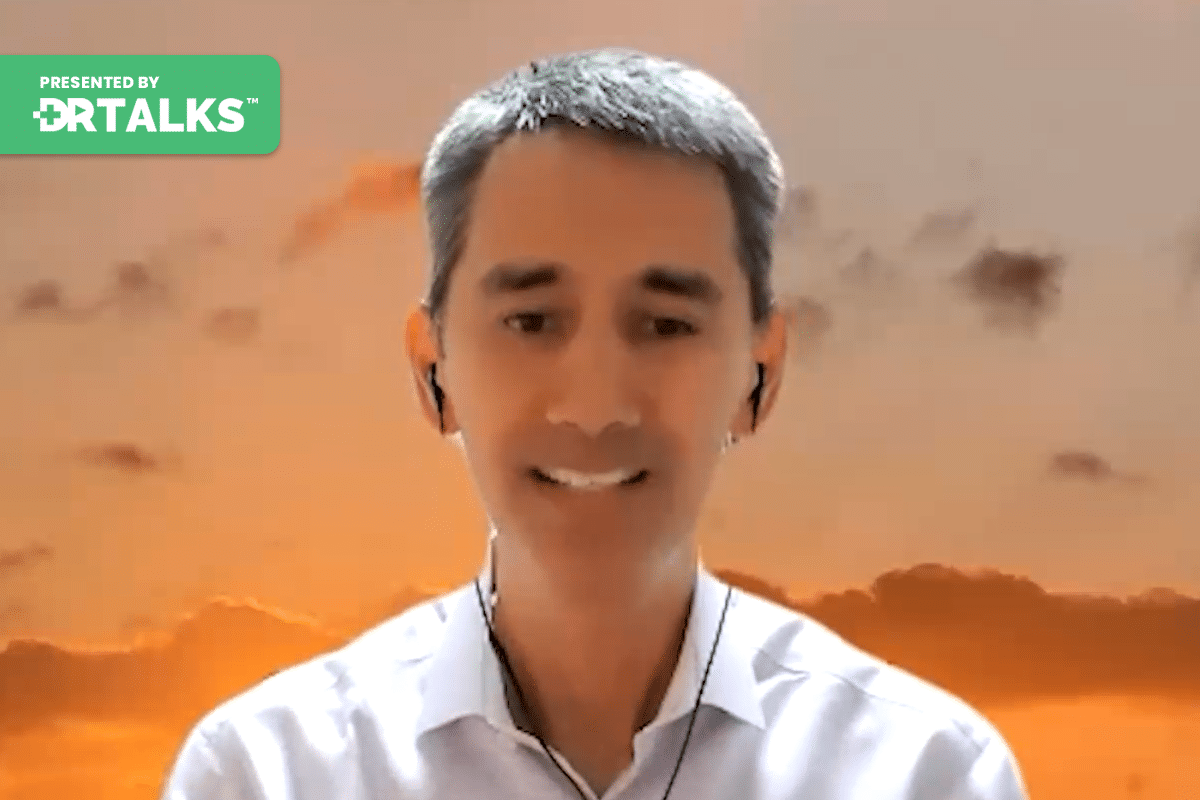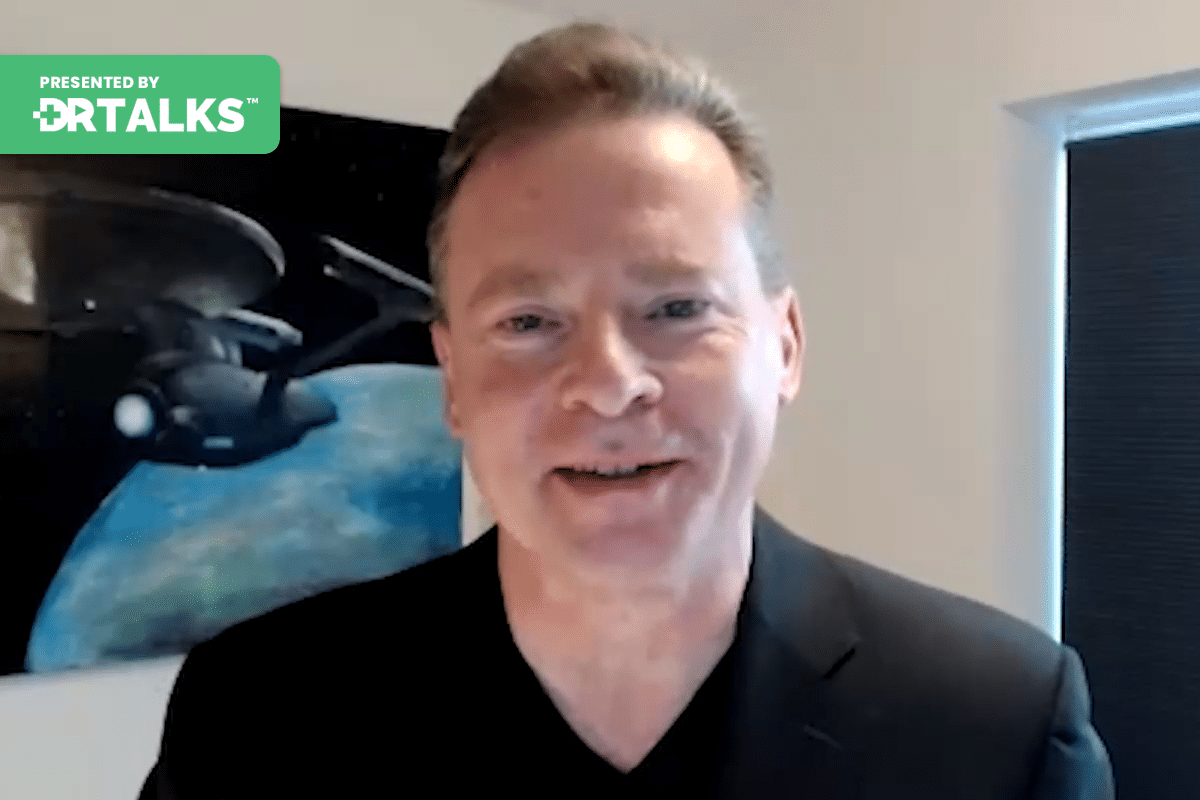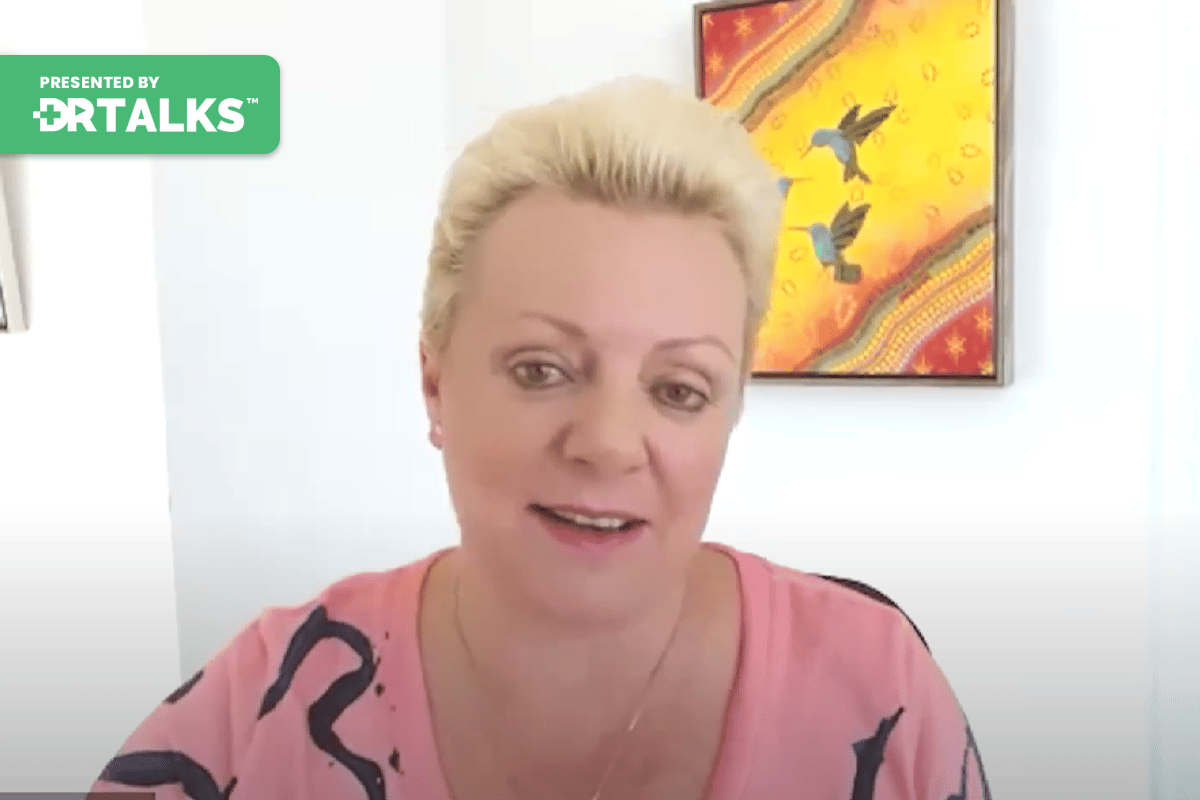Join the discussion below

Jason Prall is a health educator, practitioner, author, speaker, & filmmaker. In 2018, his independent research and experience led him to create "The Human Longevity Project”, a 9-part film series that uncovers the true nature of chronic disease in our modern world. He’s currently finishing his first book titled, “The... Read More

Kevin Conners, DPSc, FICT, FAARFM
Dr. Kevin Conners is the Clinic Director at Conners Clinic, an Alternative Cancer Treatment center. He graduated with his doctorate from Northwestern Health Sciences University in 1986 and has been studying alternative cancer care for over 23 years. He also holds AMA Fellowships and Board Certifications in Anti-Aging Medicine, Regenerative... Read More
- How Rife technology uses resonant frequencies to heal
- How to use Rife as part of your integrative cancer therapy
- Using Rife technology to target chronic infections
Related Topics
Alternative Care, Bacteria, Cancer Cells, Cancer Treatment, Cure For All Diseases, Data, Electrical Frequency, Energy, Frequencies For Diseases, Frequency, Gas-filled Tube, Governmental Protocol, Learning Curve, Light Frequencies, Lime Treatment, Mechanism Of Action, Organisms, Paramecium, Practitioners, Quality, Quantum Mechanics, Quantum Physics, Rife Technology, Royal Rife, Tesla Tube, Usability, VibrationsJason Prall
Thanks for tuning into the 2023 Global Energy Healing Summit. And joining me now is Dr. Kevin Conners who is the clinic director at Conners clinic, an alternative cancer coaching center. He graduated with his doctorate from Northwestern Health Sciences University in 1986 and has been studying alternative cancer care for over 25 years. He also holds a. M. A. Fellowships and board certifications in anti aging medicine, regenerative and functional medicine, botanical medicine and is board certified in integrative cancer therapy. Dr. Conners is also certified in functional neurology, has had over 300 hours of postgraduate study in the autism spectrum disorders and is trained and certified in epigenetic clinical methylation and nutri genomics. He has written numerous books including stop fighting cancer and start treating the cause and the seven phases of detoxification, all of which are available at Connersclinic.com He also has created numerous courses that dive deep into the topics of cancer rife lime and more and all available at courses.connersclinic.com. Dr. Conners welcome.
Kevin Conners, DPSc, FICT, FAARFM
Thank you. Thank you, Jason. I appreciate it.
Jason Prall
Yeah, so that’s really what I want to talk to you about is rife and particularly with regard to cancer and lime and all the things you’re using it for. And this is a technology that maybe some people have heard of. Maybe they’ve heard the name royal rife, but maybe not. I think there’s a lot of confusion when it comes to rife technology and what it’s capable of, maybe what are its limitations and how it interacts or how it’s different than some of the other energetic tools out there on the market. So maybe you can just kind of introduce us to this idea of rife technology and where it originated.
Kevin Conners, DPSc, FICT, FAARFM
So absolutely. So originated by the name through Royal Raymond rife back in the twenties and thirties of 1900. It was a tool that he used mainly for cancer but he wasn’t a practitioner. So he was a scientist, he was trying to discover how to help people with different diseases. This was an emergency of quantum mechanics and quantum physics and understanding that everything down to its smallest particle is simply energy that’s vibrating in a specific frequency. And so he theorized if you could hit a cancer cell or a paramecium or a bacteria with its own frequency you could cause sell license cell to die. But he did that work until the 19 fifties when the A. M. A. Was on their witch hunt for anybody who was trying to treat disease without using pharmaceuticals.
And he along with many other practitioners were shut down but unfortunately they confiscated all his materials and he just basically died about seven years later without, you know, very sad story. But currently there’s no trademark or anything on the day rife. So it does get to be very confusing because there’s a lot of the tools out there that are called rife machines or rife technology or oil rife technology that may or may not have very little to do with what rife really initially did. It’s just it’s the free market positives and negatives I guess. So people should be on the lookout for if they’re going to purchase a rife machine you want to get one that you know has the ability to actually do what you wanted to do. So you mentioned that there’s other tools out there, like other electrical machines PMF and things and those are very different than the right, so we’ll get into that.
Jason Prall
Yeah and so you know is this is this type of equipment technology that one can use on their own or do they need a practitioner or is there a little bit of a learning curve when it comes to using it on your own?
Kevin Conners, DPSc, FICT, FAARFM
There is a learning curve, it depends on the machine that you buy. You know, so I have some stipulations in, you know I’ve been doing the right since the late nineties so I have a lot of experience with a lot of different brands of rife machine and I tend to be kind of a technology nerd not in the sense that I truly understand the technology but from a clinical perspective I want to use anything that I can get my hands on that will help patients. So I feel like that’s my responsibility as a doctor to help people, I have to have an open mind to use whatever is going to work to get a person better. So we you know, I have a kind of a kind of a cross check that I want to use when I look at a rife machine and some main factors that I look at quality and usability and things. But yeah, there’s, a lot of machines on the market, Most of them I don’t think are worth utilizing at all. I’ve kind of narrowed down to two machines that are on the market that I think are very valuable, valuable and can be fairly user friendly. We tend to use just one of those because I think it outshines the other as far as usability.
Jason Prall
So before we get into those specifics, maybe you can give us an indication of how it works, like what is the sort of the mechanisms by which technology is gonna function in the body?
Kevin Conners, DPSc, FICT, FAARFM
So right. Technology basically is using frequencies. Now my definition of life technology is that it has to use light frequencies. There’s rife machines that are on the market that are your holy little handheld devices or you have little sticky pads, like a tens unit connected to your skin. And that isn’t technically, that’s not using light for sure. And I guess you could say it’s still rife because you’re using frequencies, but by my definition of a rife machine, you have to be using light frequencies through a gas filled tube. But Tesla tube that to me is the definition of what a rife machine is. So and then secondly you have to be able to use within a frequency range.
So that you could tune into the different frequencies that have been anecdotally tested for different conditions. So that’s really makes the rif different than any other energy frequency tool out there A PMF you’re limited to oh you’re at six hertz or whatever you’re at rife machine. You are tuning into whatever the frequency that is known to be beneficial for that condition. Which there could be you know 100 frequencies that have been known and been shown to help prostate cancer? Let’s say well you can program machine that is going to use those frequencies. So you’re actually directing the rife technology the treatment to that prostate cancer, not some other cancer not you know bacteria but you’re programming specifically for the frequencies for that disease.
Jason Prall
So when you say frequency does this mean like it’s sending out a certain light frequencies. So when we think about like light therapy right we have red therapy and we can use green and we can use all these different spectrums of light. Is that what you mean by frequency or is there a pulse to this thing or how is it actually working on?
Kevin Conners, DPSc, FICT, FAARFM
There is both. So there is a pulse to that. There has to be a background frequencies that’s going to really push the frequency. But then yes it is a frequency based upon hurt. So you won’t get a whole lot of change in different color of the light. So you’re not looking for color. You’re looking for an exact frequency. You might be running a frequency of 10,332 hertz or 725 hertz. That’s the frequency that you’re running for that condition. And how those have been discovered are a couple of different ways. Number one, when the federal government through the where they basically took over rice technology, royal rife technology in the fifties it went to the hands of the government and they were trying to use rife technology to create disease. I mean remember this is in the middle of the Cold War. And so they thought were gonna they’re experimenting with you know, all sorts of bacteria weaponry which is maybe where we got Lyme disease from. And you know changing different viruses to be able to send over to Russia. We’re in the middle of a Cold War fight against the communists.
They were the bad guys and we needed to kill them anyway we could. So they were experimenting with other type of weaponry and one was experimented with rife technology. There’s actually plans that you could google and find where they wanted to put this giant bulb on the bottom of the plane and they were going to fly over Moscow or whatever with running anthrax frequencies thinking that you’re going to give everybody anthrax. Well, they actually experimented with this probably using rice work and rice machinery. Running anthrax frequencies. Let’s say maybe it was a different virus with whoever they experimented on. This is what our government does. And trying to, if you hit somebody with an anthrax frequency, you don’t cause anthrax. So if they don’t have anthrax, you’re not going to help them either.
It doesn’t do anything to you. But if you did have anthrax, it can actually help your body stimulate an immune response to the anthrax and help you kill anthrax. So of course when you’re trying to create a destructive weapon out of a tool that actually with its proper use helps you overcome disease. Well, it gets scrapped pretty quick. But you could google today, you could google different right frequencies for different conditions and there’s actually a governmental protocol that you can believe. You can still pull up the last time I googled, it was maybe a couple of years ago, you could pull up a fairly large governmental document that has the known quantum physics frequencies for 1000 different diseases.
So, now there are more than that. So that’s one way that frequencies were discovered for different disorders. But then there’s other ways That through the use of rife over the last 30, 40 years when it has come back into existence for alternative care users to use different practitioners have used different frequencies with success. And then they published that data or they share that data. And then all of us practitioners can and users of rife machines can have access to that and use that frequency for whatever condition it was published for.
Jason Prall
Yeah, I mean, this is really fascinating stuff when you get into this idea of frequencies, right? And it was kind of first introduced to the concept of using different frequencies for different purposes by I think it was hold of Clark’s book, you know, the cure for all diseases or one of those books that she published. And she had a little bit different of a technology that she was using because it was more of an electrical frequency. But nevertheless, what I found fascinating was that there were certain frequencies that were particularly harmful to different organisms. Right? Be it a bacterium, be it a parasite, be it an ant, a bird, a human, you know, whatever the case is, is that there’s different frequencies that impact all these different creatures in different ways.
And so, I think this is what’s really cool is that there’s this has been studied in a huge way on how it affects different organ systems, how it affects different disease states, right? And different different organisms in general. And so I guess what I’m curious about is when it comes to cancers. You know, how did you get involved with this technology and cancer? And what makes it sort of, you know, unique in that regard when it comes to cancer treatment?
Kevin Conners, DPSc, FICT, FAARFM
Well, I got involved with. It actually was back in chiropractic school in 19 eighties when I started to read about RIFS technology. And I was just instantly drawn to it. Like, someday I want to have a rife machine. But it wasn’t until the late nineties when one of my patients came in and said, I have breast cancer in both breasts. And they said, I have three months to live if I don’t do chemo. And she said, I’m not doing chemo. So, you got to help me. And at that point in time, I had already still, you know, constantly researching rife technology had picked out the rife machine that I ultimately want to buy some time. But I just never felt like I had permission to make that step. That was the step. That was the impetus that having that patient come in and tell me that that was like, okay, it’s time to buy a rife.
So, I ordered a rife. We started using on it Using her. And ultimately, she lived another 13 years. And so, in the meantime, more and more cancer patients came to me for, I have no idea how I do know how God sent him to me because I didn’t even have a website then, you know, and I certainly didn’t advertise anything about rife technology. And so it’s that was really how I started gradually like that. We just became kind of a magnet for people that had cancer and we had, you know, relatively really good success. I would never say that rife machine surest people, I think the way it works with cancer is that it by hitting a cancer at its own frequency, you stimulate an immune response. Now, if that person is, you know, beyond repair, there have no immune response left in their body because they’re just ravaged the rif probably isn’t gonna do much at all. But if the person is, you know, within relative health and and you know, they have the ability to do other things that will help build an immune health, like different nutrition and dietary things and mindset, then you add the right to that. It just helps anything that you’re doing. Even even chemotherapy, if you’re doing chemotherapy, it helps the chemotherapy, in my opinion, target the cancer because you’re hitting the cancer with its own frequency and that tells your immune system. Hey, we better take a second look at this and it can target an immune response to that area.
Jason Prall
Wow, that’s fascinating. And I mean, this is what I find so important with a lot of these new technologies that were coming out. And even some of the sort of biologics that we might be using is that, you know, things like stem cells and and some of the things that are on the forefront is that it’s using the body’s natural response, right? It’s not going in and sort of doing something externally, although that can be helpful. That can also get you in trouble, right? Like there’s some harm that comes in when you try to externally target something, you really have to know what you’re doing. Whereas this if it’s stimulating a natural response, seems to be, in my experience, a safer way to go about doing things and a more effective way to go about doing things. Because you’re trusting the wisdom of the body to do what it knows how to do.
Kevin Conners, DPSc, FICT, FAARFM
Well, when a person has cancer, they often get scared into, okay, I’m just gonna do whatever the oncologist says, because this is a very scary disease and I understand that, but chemotherapy is very harmful in the body. You know, you’re basically giving the body a micro dose of poison to try to kill the cancer before you kill the person. And in most cases the cancer does uptake the chemo because it’s think of the cancer, it’s highly metabolic, rapidly replicating. You could say it’s hungrier. So it’s going to uptake the chemo faster than a healthy normal cell will, but you’re still gonna have a lot of collateral damage of those normal cells. That’s where people don’t feel good, They get sick, they lose their hair, You have other cell lines that are highly metabolic, like your immune system.
So there is a catch 22 of taking chemo does a number on your immune system. If you’re gonna do chemo, you’re gonna have to get a white blood cell count the morning of chemo infusion to make sure that you’re healthy enough. White blood cell count wise to be able to receive another infusion. The nice thing about the rife is that it doesn’t do, it doesn’t have any side effects. You could use the RIF on a pregnant woman. You could use it on a teeny little baby. It won’t hurt anybody. Of course, it won’t help you if you’re not running the right frequencies, that’s where you here, you know, I hear not as often anymore, but some people go. I tried the right, it didn’t work. Well, question is. Okay, what programs were you running? What frequencies were you running? I was running some preset programs and that’s actually how long did you do it? Well, I did it for an hour in my doctor’s office, you know, once a week. Well that’s not going to do anything. You know, you it’s not a magic wand, it’s not a miracle tool. You have to use it wisely. You have to be running the right frequencies. You have to be using it for a period of time. Because you’re not, it’s not just directly magically erasing the cancer, it’s stimulating your body to do that. So you need to be constantly stimulating your body to do that. So that’s a question people ask. Well then what do I have to sit in front of this thing all day long then? Well you could, but we write programs that you have to sleep anyhow.
So we write programs that you’re doing at night while you’re sleeping. So you get eight hours of sleep, you’re getting eight hours of right programming at night while you’re sleeping. And if you are gonna sit and watch football game, turn your right foot again, run it again while you’re sitting there while you’re going to read a book or something. So it’s really important to have one in your home you mentioned earlier. Is it something that a doctor needs to do in an office or is it something a person can do at home to be? You have to, you have to have, it’s one of those tools you have to have in your home to be using on a very regular basis if you want to see results with it.
Jason Prall
So, you know, if somebody is diagnosed with cancer. There’s a lot of options, right? They can go there’s a lot of conventional options there. And some of those are actually, we’re having a little bit more targeted immune options too. and that sort of conventional route, which is great and there’s a ton of sort of this alternative integrative care options. I’m just curious with when it comes to right, is this one of those tools that you would put at the top of the list for somebody who’s been diagnosed and wants to take whatever steps necessary to try to regain their health. Would this be one of those devices that you say you got to include? You know, this device?
Kevin Conners, DPSc, FICT, FAARFM
Well, I’m very biased, but my bias is based on experience. Right? So my biases based upon the fact that I’ve had patients that came to me in Stage four cancer, almost all of our patients with Stage four cancer. And we’re typically guys that said, hey, you know, I’m not changing my diet, I’m not taking a bunch of supplements. So, you know, that literally the only thing they did was the right and saw like miracles. So it’s like to me that’s the most important thing. So I’m not, you know, we don’t just do the, right, okay, so we are very focused on diet and we’re very focused on a very specific nutraceutical approach for each of our patients, but that being said, many of our patients grow tired of taking supplements. Many of our patients, you know, are older. They have habit patterns with diet that it’s very difficult to break. So they don’t make drastic dietary changes and they still get good results as long as they’re still using the rife on a daily basis. So, if a person came to me and said, okay, if what would you do for a person that has pancreatic cancer would be the number one thing to do. It’s, I don’t care what kind of cancer I would say. Get a rife machine that would be, it’s because there’s, it doesn’t change your life, you know, like changing your diet or having to remember to take supplements or all you gotta do is take 30 seconds to turn the thing on before you go to bed.
Jason Prall
Yeah, I mean, this is a big one, right? When and I think you, you realize this when your clinician and you work with a lot of patients or clients that, you know, this, this idea of compliance, right? And or perhaps you even know yourself really well. And it’s like sometimes compliance is the hardest part in some of these therapies and protocols and programs that you give people because sometimes it may need to be so dramatic or drastic of a change to somebody’s lifestyle. So when you have something like this, that compliance is easy, it’s almost like that’s you bump that up on the list anyway because, you know, you’re going to get them to do it, right? So that’s a big one is compliance.
And what I’m kind of feeling as you, as you talk about this is that seems like the rife while universally a good approach seems like it might work really, really well in sort of younger populations because they have a lot of vitality. In other words, they can stimulate that immune response pretty readily for the most part. And I’m generalizing in a big way here, and also for those who are doing a lot of other things as part of their protocol. So if they’re getting really good sleep and they’re focusing on sleep, if they’re, you know, if they’re meditating, if they’re focusing on nutrition and they’re doing all the things and that makes the rife machine that much more successful.
Kevin Conners, DPSc, FICT, FAARFM
Well, it is because, you know, you’re hitting the disorder and the disease from as many different facets as possible. That’s always the best thing. And people often ask is like, okay, a lot of times people think when they have a serious disease, like cancer, that they have to choose, I’m gonna do alternative or I’m gonna do it, my oncologist says, and that’s just totally misnomer wrong thinking, this information there. Yes, there’s some things from a nutraceutical standpoint that you don’t want to do for at least a 48 hour window of when you get your, you know, infusion of chemo if you’re gonna go that route, you don’t want to take high antioxidants per se, during that time, But the rif there’s no contraindications. So you run the rife the whole time. So all it’s gonna do is help the chemo target the cancer better or the immunotherapy target the cancer better. So there isn’t any contraindications there. And certainly with other nutraceuticals, you know, you have to just guide the patient around if they’re going to do chemo or immunotherapy and wise decision, but it’s only going to help the patient by doing a natural approach along with a standard of care approach if they’re choosing that.
Jason Prall
So is there any way to tell if it’s working right? I mean a lot of times we might be able to tell if something is you know, maybe creating some sort of, you know, Horkheimer reaction or detox reaction or something, You might notice some negative effects. Sometimes we might notice some positive effects with some things. This seems very difficult to tell if it’s actually working, is there anything that we can go off of base beyond just belief.
Kevin Conners, DPSc, FICT, FAARFM
Well, you don’t really get a timer reaction with the rife with cancer. You will that’s one of the ways you can tell if it works is that, you know, you use it and you feel sick if you’re killing the bacteria like Bergdorf, the Lyme disease that has grabbed negative bacteria that has like the sack rides in the cell membrane that you’re going to liberate causes Horkheimer reaction, you don’t want to have a cyber reaction. So even with Lyme disease you certainly don’t want to elicit a reaction. If you talk about negatives of the rights, that’s the only thing you have to be careful about is that it does kill quickly. It does kill bacteria and that’s how you can tell.
But with cancer it’s I do not believe that it’s causing cell license. That’s a pathological death of the cell. Which would produce a lot of exo endotoxins in your body which could cause a cyber reaction like chemotherapy does. But you don’t get that with the rife. In the 20 plus years I’ve been using the right for cancer patients. We don’t see any type of her excimer reaction with it. So how do you know a therapy an alternative therapy is working is you have to go back and have some sort of objective measurement.
So if our patients are still working with the oncologist and the cancer was objectively determined via a C. T. Scan. Then we recommend if you want to compare apples to apples, you have to do another cT scan or an M. R. I. Or a pet scan. And that may give the patient the most comfort that the cancer stopped growing or the cancer is even shrunk. But a lot of our patients don’t want to do another ct scan that’s a lot of radiation what else how else can we measure? Well then you could look at tumor markers if your cancer is showing tour markers. And or ultrasound or you know, thermography or something like that. That’s a little less invasive.
Jason Prall
And so, you know, you mentioned that there was you know, a couple of ways you can use this, right? Different frequencies and what have you. Is there any other ways you can customize? The rife technology And I guess is their standard protocols that you might use for cancer? Let’s say,
Kevin Conners, DPSc, FICT, FAARFM
Well that’s one of the stipulations that I have is how I would judge a machine is maybe number one is it’s got enough power to penetrate a person’s body. And then number two. Is it using light frequencies? That was the definition of what a rife machine is a number three, it has to be programmable has to be barely easily programmable. So that you can there’s a lot of rife machines out there. They come with these preset programs but you don’t know what frequencies are in there. You want to be able to have somebody skilled write a program for you for your specific condition.
Because prostate cancer is different than frequencies are gonna be different than breast cancer are going to be different than pancreatic cancer or squamous cell and melanoma et cetera. They’re all going to be different frequencies. So you have to be able, again, if you have prostate cancer, you’re running melanoma frequencies, you’re not gonna have very much effect on prostate cancer. So you have to be running frequency specific to your condition that you’re trying to deal with. So that’s a key component for me. I mean that is everything because if you’re just running general health frequencies while there may be some benefit to that, you’re not really doing yourself a service. If you’re trying to kill lime or kill, you know, prostate kits or some other disease. So you have to be very specific to that. And then finally it has to be user friendly. So it’s easy to turn on, easy to use portable, semi portable that you you know, it doesn’t just become something that another tool that you bought that you’d ever use. So.
Jason Prall
And so you mentioned line a couple times, you know, this sounds like and this is a lime and co infections is something that you deal a lot with in your clinic. How do you use the rifle in those circumstances when you, when you have somebody that comes in with what you suspect to be or confirm to be Lyme or co infections, do you always use rife for that condition or is there certain instances where you might or might not?
Kevin Conners, DPSc, FICT, FAARFM
Well rife would always be appropriate. So then you go back to proper use of any tool. Right? So the proper use of the RIF would be for any living organism, any living cell that you’re trying to affect an immune response against. That’s where the rights would be appropriate. So if you’re trying to kill a bacteria and like Bergdorf with Lyme disease or its many co-infections that may be viral or fungal or bacterial, the RIF is an extremely appropriate tool. So it can be a lifesaver for a chronic Lyme patient, it could be a lifesaver for a cancer patient. But if you had mercury toxicity and that was your main thing, that wouldn’t be my first, my first choice would not be a rife machine. So
Jason Prall
Yeah, and you’re pointing to something here. I think it’s really interesting because a lot of times when somebody might have a line, they might also have you know, heavy metal, right, That that’s going on that’s really affecting them and and a bunch of other things that are that are sort of sort of metabolic chaos and dysfunction going on in the body. And so I think it’s just an important place in this discussion to to point out that this isn’t a tool machine that you bring in and just you just use it and everything starts to resolve necessarily right, and there may need may need to be focused and targeted approaches applied to various systems of the body and and if you’ve got metals right? This is where a lot of these infections like to sort of use those shields or to hide out or to to to protect themselves. Right? So it’s a complex scenario when it comes to just because you have Lyme or you may suspect you have lime or some other co infection. There may need to be other other aspects of the treatment that that go along with something like a rife,
Kevin Conners, DPSc, FICT, FAARFM
There almost always is with Lyme. So like you said with lyme, it’s almost guaranteed that you have heavy metal toxicity to the benefit of the Rif is that it goes through your body and it will kill that bacteria, whether it’s intracellular at the time or if it’s wrapped in a metallic matrix will still kill the organism, but you still have to deal with the metallic matrix.
Jason Prall
But that’s unique though, in and of itself. Like that’s it’s pretty tough to get to lyme in my experience without something like this. If you’ve got that there as well
Kevin Conners, DPSc, FICT, FAARFM
Well and because with lyme it’s even more complicated because I think you could move into what I call phase three line where you have an autoimmune disorder. And then if you’re trying to use the typical immune stimulants that are like herbal formulas and different nutritional complexes to try to kill the lyme because it’s a bacteria and it’s an organism. It’s a pathogen, I have to kill it. So I have to stimulate my immune system if you do that through chemistry meaning taking supplements and things like that. Anything that you’re gonna boost that immune system with, you’re going to kill that which you have antibodies against first. And if you have antibodies against self tissue e an autoimmune disease, you’re gonna make yourself worse. So using the rif you can kill single cell organisms. That’s when it actually causes license. So and I think you on Youtube, there’s still some videos using frequencies on a Paramecium. Paramecium just explodes in the under the microscope. It’s kind of cool to watch unless you’re a fan of Paramecium but it that’s what it does to a bacteria. It does not do that to human body cells because we’re more complex. It’s a more complex cell and it’s not causing cell license even though I think rife believed it did.
I don’t see any evidence of that using it currently. I’ve used it more years than probably he has and I just don’t see evidence of that. We would have and we’d have endo talks and issues where people would get sick with it. We just don’t see that with cancer patients. But you do see that quite readily with Lyme patients and that’s the only caution I have with the Rif If people go buy a rifle and start using it for lyme, you have to be really you have to go really slow with the amount of time you’re using kill programs. I mean even like five minutes a day to start with. If you’re a very, you know, unhealthy product lyme patient to start with, you gotta go slow because it kills quickly and you will generate a lot of lipo policy. Sacha rides in a huge immune response and if you have phase three auto beauty already, it’s that’s going to make you feel a lot worse.
Jason Prall
Yeah, so that’s a pretty good indication that if you’re using the right technology and you start to notice a hyper inflammatory response, then you may be unknowingly killing some some infections that there and that’s the that’s the opportunity to dial it back and sort of find that low point and and ramp up as slow as possible so that you don’t initiate that hyper inflammatory response. Right? Because that’s I think a lot of times if we don’t do a thorough work up or have a practitioner who can do that for us, then, you know, there’s all kinds of stuff that we may that we might run up against that we didn’t realize was there.
Kevin Conners, DPSc, FICT, FAARFM
So typically if I write a program for a line patient, an overnight program, I might only start with 5, 10 minutes over the course of an eight hour period of kill programs and the rest are gonna be liver support, kidney support. And you can kill things that don’t have light with Wallace aka rides in their cell membrane like viruses, you can run an all night virus program and you’re not going to have a hurt cyber reaction. But you will if you do the gram negative bacteria.
Jason Prall
And so you mentioned something that it’s interesting that we haven’t touched on yet, which is the sort of support program. So maybe talk to me about that. How is the rife machine actually supporting the liver, the kidneys whatever the sort of organs of elimination, so to speak.
Kevin Conners, DPSc, FICT, FAARFM
So remember if you hit something with its own frequency you cause it to vibrate. So even with sound frequency you could use you could do the same thing. And the perfect example of that is using a certain pitch of a person’s voice can shatter a crystal goblet. It’s not changing the molecular structure of the crystal in the goblin, it’s just causing them to vibrate because you’re hitting it at its own frequency and it starts to vibrate. It can’t hold the shape of the goblin anymore. But if you look at it under electron microscope, it’s still crystals. Right?
Jason Prall
So it’s resonant its resonance that’s really causing this phenomenon. And I remember, I remember Tesla actually I think it was either a thought experiment or or or something but there was something about basically moving the pendulum at the bottom of a, of the empire state building, so to speak or some some tall building. And if done at the correct resonant frequency you could you could get that building to shake right.
And this is Coleman Eros Bridges, a famous example from my engineering days in Washington State, there was a wind that came through in this, this suspension bridge caught its own resonant frequency and just shattered. Right? So it’s a interesting phenomena on the physics level. This idea of resonant frequencies. And you mentioned tuning forks is a really good example, right? You can have two tuning forks that are both C sharp and you bang one and you’ll start to get a resonant frequency in the other. Right? So there’s there’s really interesting phenomenon when it comes to resonance.
Kevin Conners, DPSc, FICT, FAARFM
And so if you hit liver cancer cells at their own frequency, they’re going to vibrate. Now that can help clean up the cell that can help your body look at, trying to heal it can stimulate blood flow to it. You do all sorts of good things for that. And that’s really why I think that’s how you’re positively affecting a cancer, you get a cancer cell and its own frequency. You’re really stimulating an immune response to it. That’s the bottom lyme is why does your immune system not kill the cancer? Well, because it’s cancer is your own cells. So you’re the cancer cells that are replicated have the ability to literally turn off the T cell response to kill it. That’s the whole idea of medical standards of care, immunotherapy. So if you take keytruda, keytruda is a drug that basically turns off that receptor on the T cell so that the T cell doesn’t recognize a cancer cell as your own tissue. It’s remarkable therapy. It’s fantastic. I’m excited about immunotherapy. The problem with it is it doesn’t isn’t specific to the cancer cell. It turns off the receptor on the T cell. So now the T cell doesn’t recognize any tissue as self tissue. That’s why when you take keytruda immunotherapy, you end up with just about everything you can think of that ends with an itis you’re gonna have with colitis and bio card itis and all sorts of negative things. So it has a lot of negative side effects. But from a chemistry understanding, it’s trying to do the same thing that I think the RIF is doing by stimulating, hitting that frequency. So it stimulates an immune response. So the T cells at least have to take a 2nd and 3rd every night you’re running it, they take another look at this is this isn’t right. And it starts attacking it and you get the benefits.
Jason Prall
Well, I know when it comes to energy technology, I’ve noticed that a lot of the research tends to be in places like Russia china basically in the East in some Eastern parts of Europe they do a little bit more of the actual clinical research on these things. I’m curious if you’ve noticed any of the research, in the other parts of the world, or is it picking up, is there a future in rife technology is as we have come, as we come to know it in the more conventional, if you want to call us that sort of conventional integrative care?
Kevin Conners, DPSc, FICT, FAARFM
Well, I tend to be a little more pessimistic, I guess. I don’t think so. I think unless there’s some drastic change in the medical pharmacological, monopoly that we have, it’s so driven by muddy and greed and power that people like me, you know, they just want to go, you know, kick off the face of the earth. We get attacked all the time. We have to, you know, be careful of what we say and you know, how we say it. It’s a power hungry game. So yeah, my hope is someday. But I think there has to be some very drastic changes our purposes more to try to take a grassroots educational approach, people can still make decisions on their own. And we’re not even asking people to say no to chemotherapy. If that’s what you want you do, if you feel like God is leading you in that direction, by all means. We want you to do that, but we don’t want you to think that it’s the only choice and couple lead whatever you’re doing, even if you’re not gonna choose chemotherapy coupling, whatever you’re gonna do with rife technology, we’ve just seen better results. It’s not gonna be magic but you’re gonna have better results.
Jason Prall
Well that’s about as good a place to end it as any. So Dr. Conners. Thank you so much for coming on and sharing your wisdom. Where can people find more of your work?
Kevin Conners, DPSc, FICT, FAARFM
connersclinic.com Our website is full of free information like you said, we don’t have multiple courses and I have a course of rife technology or frequency healing course that’s just full of a lot more information help people.
Jason Prall
Yeah. Well your site does have a ton of resources so I encourage everybody to go check that out again. Dr. Conners. Thanks so much.
Kevin Conners, DPSc, FICT, FAARFM
Thank you, Jason.
Downloads

